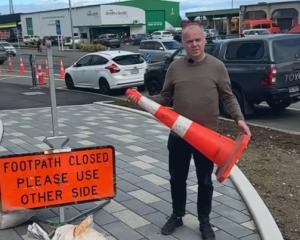
Late last month, a man called Gene Sharp died at the age of 90 in his modest row house in East Boston. His passing elicited little if any coverage in the international media, and most people in New Zealand will not recognise his name. And yet, he is probably one of the most influential thinkers of the past 40 years.
Quietly nominated three times for the Nobel Peace Prize, his ideas about how to use nonviolent tactics to bring about radical political change have been influential in the peaceful overthrow of dozens of dictatorships, including a number of regimes in the Arab Spring. Today, the legacy of his original theories and ideas are literally reshaping international and domestic politics through dozens of nonviolent civil resistance movements around the world.
A Harvard-based scholar, Gene Sharp began developing his ideas about nonviolence in the 1950s and 1960s in the context of the upheaval of the US civil rights movement. In his younger days, he had been a fervent admirer of Gandhi, believing in the power of love and personal morality to challenge repression and exploitation. But as his thinking matured, he moved away from other scholars of nonviolence who focused on understanding the thought and actions of prominent figures like Gandhi and Martin Luther King jun to develop a theory that was much more his own.
Sharp’s innovation was to argue that collective nonviolent action is a distinct kind of political tool one that can be used by anyone and everyone, regardless of their philosophical or religious principles. In fact, nonviolent activists are rarely pacifists or Gandhians, and many reject such labels altogether for their association with passivity and non-resistance. Instead of relying on love, compassion, or the persuasive power of personal suffering, Sharp thought of nonviolence as a method of coercing opponents, similar to the effects of military action. Indeed, he referred to nonviolent campaigns as a form of armed conflict, except that the arms employed by activists are psychological, social, economic and political. Taking this more hard-bitten, pragmatic approach, Sharp showed that nonviolent action has been far more common through recorded human history than anyone had previously recognised.
Specifically, Sharp’s main contribution was to show how governments can be overthrown nonviolently by movements of ordinary people. He discusses this in multiple works, including his most famous book, From Dictatorship to Democracy, which is basically a short guide to overthrowing governments. Key to his work is his consent theory of power. If people withdraw their obedience, co-operation and submission to a government, they remove a government’s sources of political power. Basically, a ruler’s power comes from people doing their jobs, and when key groups such as workers, the security forces, the media, civil servants and the education system stop doing what they are told to do, a rulers power is dissolved. One of Sharp’s major legacies was to list 198 methods of nonviolent action that have been successfully used to dissolve sources of power in the past. These methods can be seen as nonviolent weapons, and they include protest and persuasion, non-co-operation and direct intervention.
In recent years, a great deal of empirical research has been undertaken to test whether Sharp’s theories really work, including research undertaken by staff and students here in Dunedin at the National Centre for Peace and Conflict Studies. This research includes a ground-breaking study by Erica Chenoweth and Maria Stephan called Why Civil Resistance Works, which most famously discovered that between 1900 and 2006 nonviolent civil resistance movements were twice as effective at achieving their goals than armed movements which used violence. This counterintuitive finding that nonviolent resistance is more successful against repressive governments than armed revolutions has been confirmed over and over again. As a consequence, protesters, activists and a growing number of armed movements around the world are now studying and training to use the strategies of nonviolent resistance in their struggles for freedom, justice and democracy. Closer to home, Sharp’s theories have also been influential on New Zealand activism, and have shaped our country’s political history.
Members of the Nonviolent Action Network in Aotearoa, a loose collection of trainers who ran nonviolent workshops, attended his talks overseas and then brought his literature back to New Zealand to use as the basis for their training. The only handbook published in New Zealand on nonviolent theory — by Dunedin peace activist Allan Cumming — is based largely on Sharp’s theories. It has recently been reprinted for a new generation of environmental activists by Coal Action Network. Among others, Save Aramoana and Nuclear Free New Zealand were both successful movements driven by an understanding of Sharp’s theories.
So the next time you see a protest movement on the news, or wonder who it is exactly the Iranian Government is blaming for the rise in protests in its streets, you might remember Gene Sharp, the Clausewitz of nonviolence. He discovered that nonviolent activism by ordinary people, especially if it is organised and strategic, can bring down even highly repressive governments and force through radical political change.
In a time of significant political transformation to our societies prompted by climate change, global inequality and rising authoritarianism, Gene Sharp’s ideas of how to bring about nonviolent change are needed more than ever.
- The article was prepared by Richard Jackson, Joe Llewellyn, Kyle Matthews and Jonathan Sutton of the National Centre for Peace and Conflict Studies, University of Otago.
Comments
A roman general called Fabius had a non-violent approach to conquering. He surrounded a town, cut off supplies and waited until the inhabitants surrendered due to the lack of food and supplies. Rarely was a call to using arms and force needed.
The problem with passive resistance is the irresistible force resisting the passivity.
In the US, the most effective non violent protests were by the 'Yippie' youth movement; street performance and unexpected, creative disruption.











